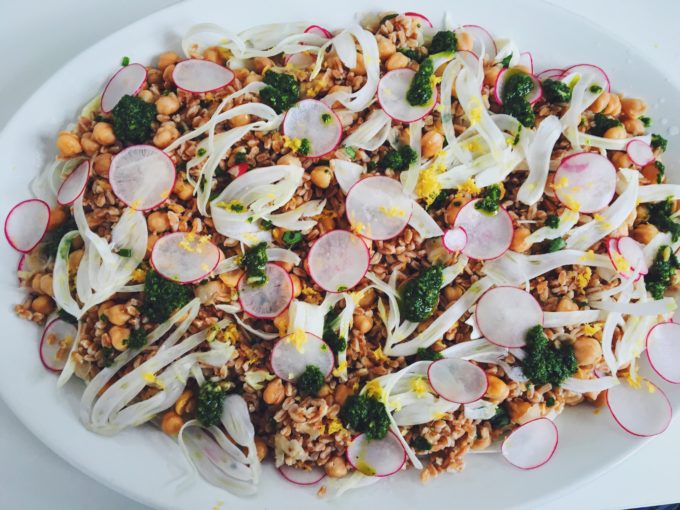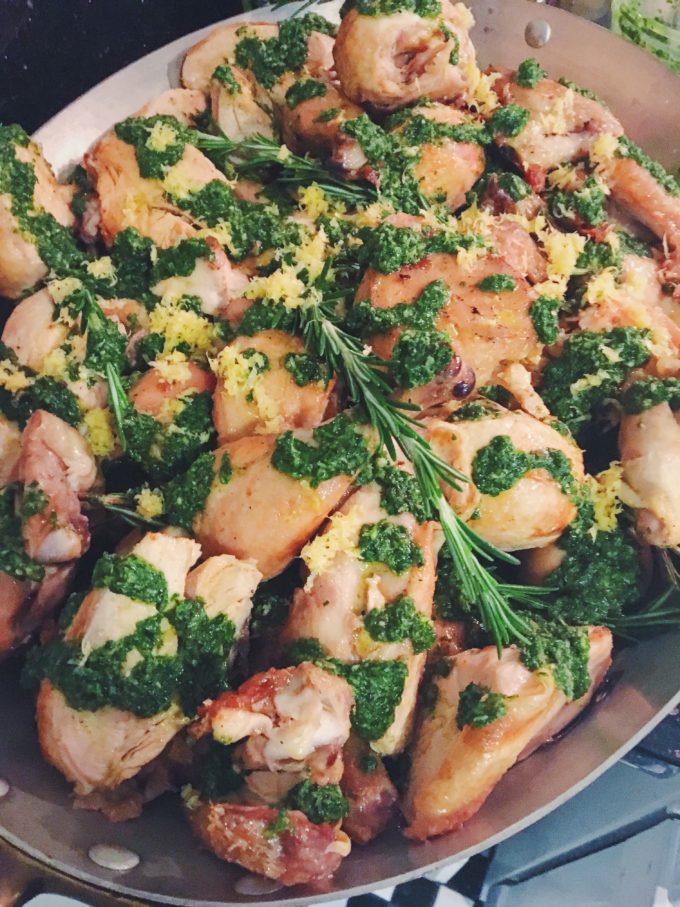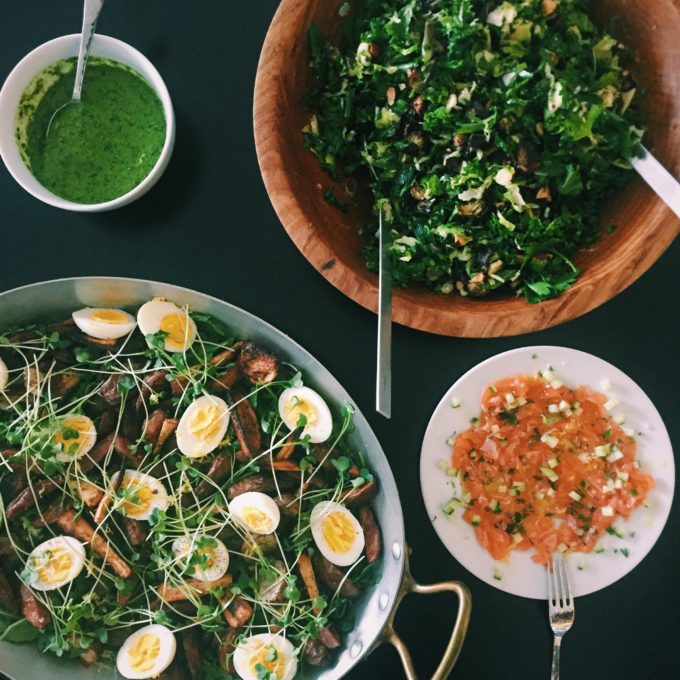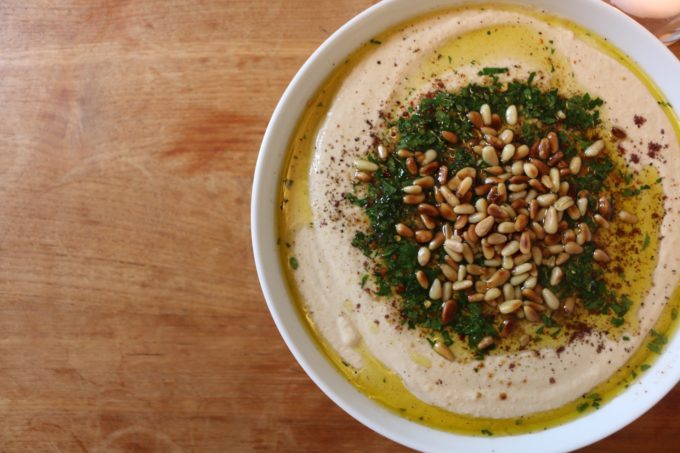
We made it through the holidays and toasted to the New Year, now it’s time to get to work on our resolutions. Although a resolution implies that we want to make positive changes in our lives, I think oftentimes we get caught up in more negative connotations. It’s like we’re saying that the 2016 version of ourselves wasn’t enough and we need to be smarter, richer, thinner, you name it, this year.
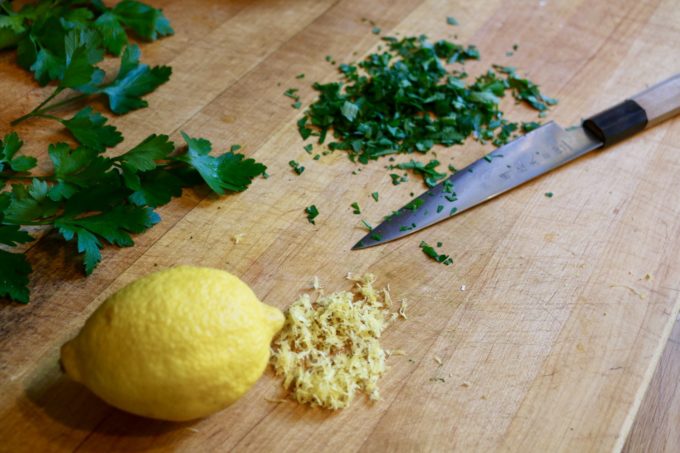
So, in 2017, instead of a resolution, I’m setting a “practice”. Mahatma Gandhi famously said, “an ounce of practice is worth more than tons of preaching.” In order to make lasting changes in your life you need to practice and practice makes perfect right? My practice is food related, but instead of eliminating bad foods from my diet, which would bring us down the negative resolution path, I’m choosing to view my goals as a learning experience. So here it is: In 2017, I will savor anything my heart desires as long as it’s homemade. And I don’t have to be perfect.
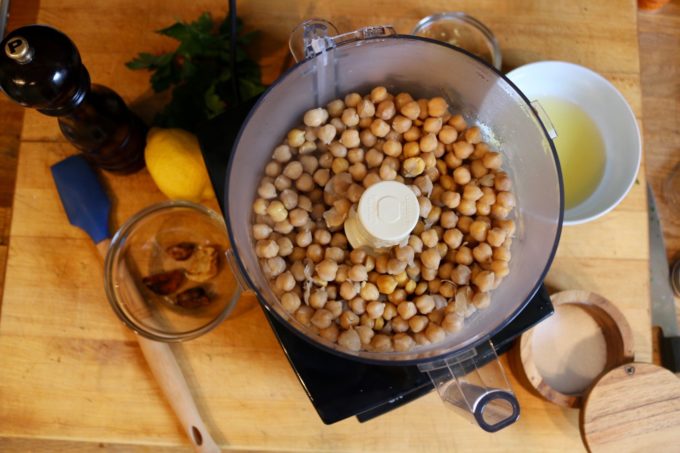
More than anything, this will allow me to learn. With each passing day I spend as a chef, I discover more about how much there is to learn. For me, that mean’s doing. I could read every word of every cookbook on my shelf (33 of them, but who’s counting?), but to retain the information and knowledge of my cooking heroes, I need to make stuff and practice what my teachers preach. So, with my practice, I’ll kill two birds with one stone: I’ll respect my every day cravings (brioche buns, cappuccinos…) and teach myself how to make the things I eat that aren’t homemade. It may seem like a tall order but ultimately I’m hoping to make it a part of my routine, second nature, like riding a bike.
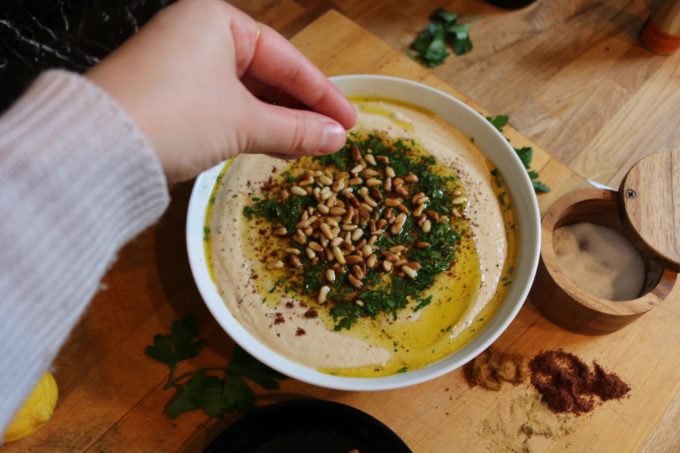
The first step to forming a new routine is setting boundaries and guidelines. Here are mine…
- This is not a cleanse, but a clean-out! I’m ridding my pantry of all processed foods and filling it with the bare necessities. In an excerpt from Laura’s post about habits, Strengthening Willpower Starts at Home, she writes, “Don’t buy it. Clearly the easiest way to resist temptation foods in your home is to not allow them entry in the first place.”
- If I’m craving it, make it! It’s my hope that by taking the time to make something like ice cream from scratch, I’ll actually wind up enjoying it more. Not to mention, there’s probably an added benefit of wanting to make homemade things last longer because savoring food means you’re eating less.
- Make it in bulk and freeze your heart out! Many menu-planning-star-students have mastered this craft already and for this practice it’s absolutely necessary in a household with full workweeks. This means hardening off a few hours of my Sundays to making bulk snacks, freezer-friendly meals and prepped menu goodies. This would include things like our Olive Oil Salty-Sweet Granola, freshly blended hummus, homemade pita, frozen smoothie mixes, meatballs and soups, as well as portioned salad ingredients like toasted nuts and mandolined veggies (the way we do for our clients). This makes the task of piecing it all together after a long day a piece of cake.
- Ask for help and help others! Sometimes it feels like it takes a village to put dinner on the table so it’s helpful to know how to delegate. I live with my boyfriend, a notoriously reluctant cook, who has really stepped up to the plate (pun-intended) in recent months and has even come up with a few of his own individual home-cooking goals. Teaching is another great tactic for retaining kitchen knowledge so entertaining is also permitted!
- Let dining out be motivating, not shameful! Most of my inspiration and passion for cooking comes from experiencing new cuisines and keeping up with trending dishes. I live in NYC for goodness sake! When it’s all said and done by limiting my food-exposure, I’m undermining my curiosity as a chef and isn’t that the whole point of my new practice?
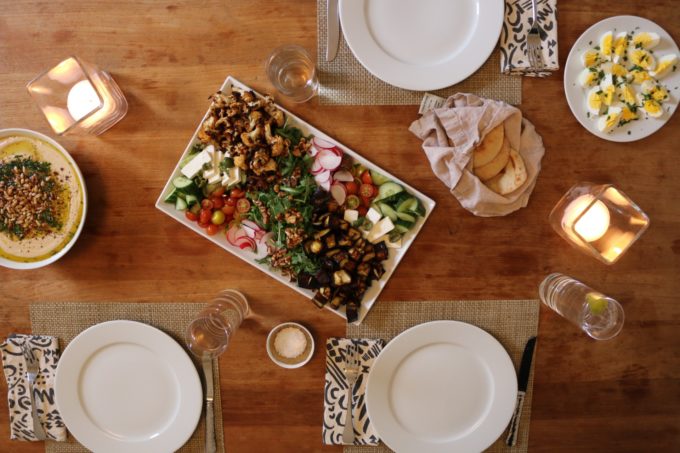
So here’s to 2017! I’m wishing you all a delicious, homemade food-filled year ahead. First task? Getting rid of that awful store-bought tub of hummus and giving mine a go.
Charlotte’s Homemade Mediterranean Hummus
- 1 15-oz cans chickpeas, drained
- 1 tsp. baking soda
- 2/3 cup tahini paste
- Juice and zest of one lemon
- 3 tsp. kosher salt, or to taste
- 1 cup ice water
- 3 cloves garlic, smashed
- 3 tbs. good olive oil (approximately)
- 2 tbs. fresh parsley, finely chopped
- Pinch crushed red pepper, or to taste
- Salt and pepper to taste
- 3 tbs. pine nuts, toasted
Method:
- In a medium sauce-pan over medium heat mix chickpeas and baking soda, stirring constantly for 2-3 minutes until the baking soda has dissolved.
- Add enough water to cover the chickpeas and bring to a boil. Simmer until the chickpeas become really soft, but not mushy. Strain off the shells that float to the surface.
- Strain and transfer to a blender or food processer and process until the mixture resembles a paste. It’s okay if it’s lumpy.
- With the blade spinning add in lemon juice and ½ the zest, tahini paste, salt and gradually pour in the ice water (with ice cubes) until the mixture becomes smooth and silky. You may need more or less water depending on the power of your blender so watch carefully.
- Meanwhile heat a small skillet with the olive oil until hot. Add the crushed garlic cloves allow them to sizzle and brown on both sides pushing them down with the back of your spatula, about 5 minutes.
- Reserve the excess oil in a small mixing bowl to cool and drop the sautéed garlic into the food processor and blend until combined. Taste and adjust seasoning.
- Once the oil has cooled add parsley, crushed red pepper, lemon zest, pepper and a pinch of salt. Stir until combined. Add extra oil to loosen if necessary.
- Spoon hummus into a serving dish and pour the parsley-oil over. Finish with a sprinkle of toasted pine nuts and enjoy!
With love, Charlotte
